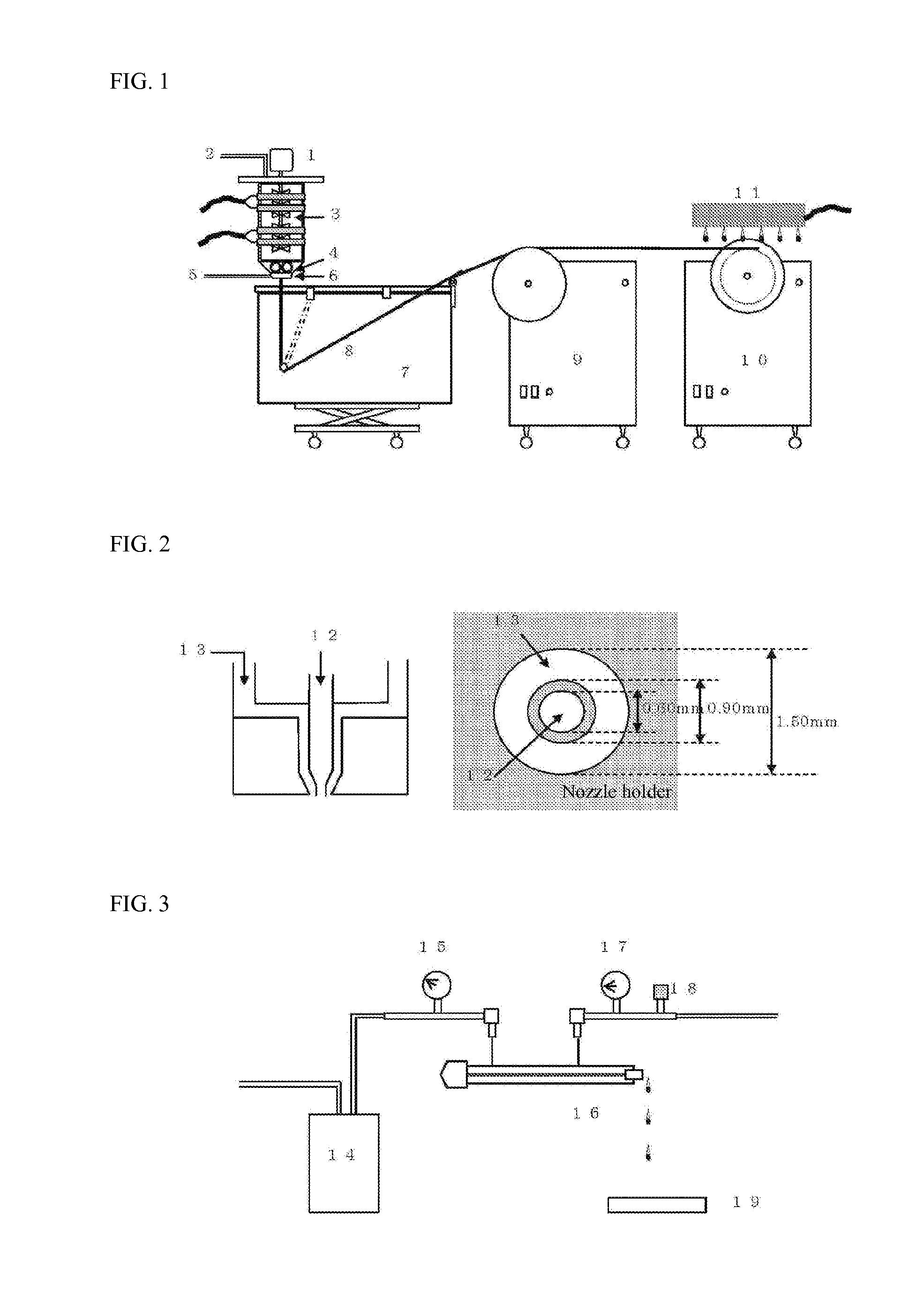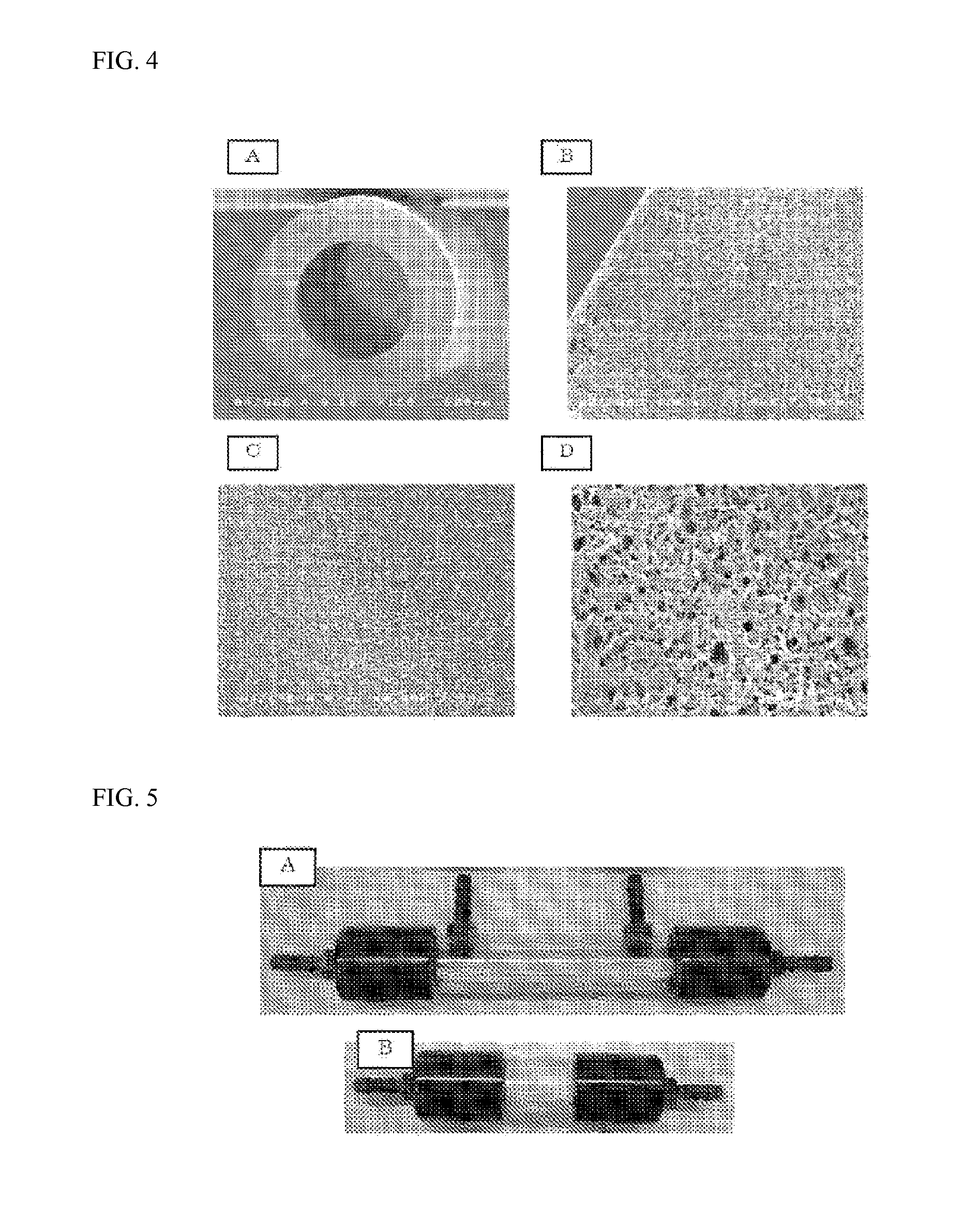Porous polyamide hollow fiber membrane having very small pore diameter, and method for producing same
- Summary
- Abstract
- Description
- Claims
- Application Information
AI Technical Summary
Benefits of technology
Problems solved by technology
Method used
Image
Examples
example 1
[0108]A liquid for membrane formation was prepared by stirring 260 g of polyamide 6 chips (A1030BRT available from UNITIKA LTD., relative viscosity 3.53), 197 g of sulfolane (available from Tokyo Chemical Industry), and 543 g of dimethylsulfone (available from Tokyo Chemical Industry) at 180° C. for 1.5 hours to dissolve the chips. The liquid for membrane formation was transferred to a spinneret (a double-pipe nozzle for hollow fiber production having a double-pipe structure) through a metering pump, and extruded at 5 g / min. The spinneret had an outside diameter of 1.5 mm and an inside diameter of 0.6 mm. Glycerin was used as an inner fluid, and was passed at a rate of 2.0 g / min. The extruded liquid for spinning was introduced into a coagulation bath containing a 5° C. 50 mass % propylene glycol solution through an air gap of 10 mm, cooled to solidify, and taken up at a take-up speed of 20 m / min. The obtained hollow fiber was immersed in water for 24 hours, whereby the solvent was e...
example 2
[0111]A polyamide hollow fiber membrane was prepared in the same manner as in Example 1, except that the coagulation bath was changed to a 5° C. 50 mass % glycerin. As shown in Table 1, the obtained polyamide hollow fiber membrane had a contact angle of 520, water permeability of 410 L / (m2·atm·h), and 10 nm particle blocking rate of 98%.
example 3
[0112]A polyamide hollow fiber membrane was prepared in the same manner as in Example 1, except that the coagulation bath was changed to an equal-weight mixture of glycerin and ethylene glycol. As shown in Table 1, the obtained polyamide hollow fiber membrane had a contact angle of 52°, water permeability under external pressure of 200 L / (m2·atm·h), and 10 nm particle blocking rate of 94%.
PUM
| Property | Measurement | Unit |
|---|---|---|
| Temperature | aaaaa | aaaaa |
| Temperature | aaaaa | aaaaa |
| Fraction | aaaaa | aaaaa |
Abstract
Description
Claims
Application Information
 Login to View More
Login to View More - R&D
- Intellectual Property
- Life Sciences
- Materials
- Tech Scout
- Unparalleled Data Quality
- Higher Quality Content
- 60% Fewer Hallucinations
Browse by: Latest US Patents, China's latest patents, Technical Efficacy Thesaurus, Application Domain, Technology Topic, Popular Technical Reports.
© 2025 PatSnap. All rights reserved.Legal|Privacy policy|Modern Slavery Act Transparency Statement|Sitemap|About US| Contact US: help@patsnap.com



